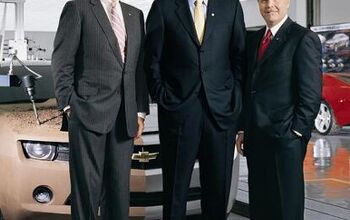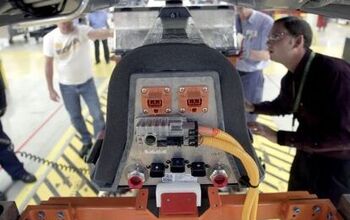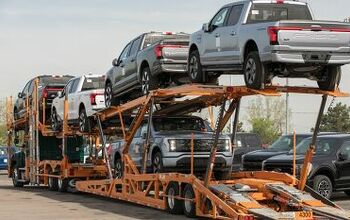Guest Editorial: Retooling GM's Culture, Part One
[Editor’s Note: This is part one of a four-part series. The author writes: I have been a consultant for GM for 15 years and an employee for 9 years prior to that, and have worked at one time or another in almost every region and function. This paper has not been endorsed or supported in any way by anyone at GM; I suspect it will be harshly rejected (or simply ignored) at the senior levels but will strike a deep chord a few levels down. This is written out of the deepest affection for the company and it is an attempt to deal with a fundamental issue that has kept the company from success and is now critical to its long term viability. The people who do care about GM—there are many—and who think a future is still possible need to stand up and try to make a difference, regardless of the short run costs.]
GM has developed a plan, currently before Congress, which is supposed to demonstrate its long run viability. The company is looking at its products, brands, manufacturing footprint and capacity, health care, and “structural costs,” while negotiating with the UAW to further reduce labor costs. All this is well and good but it is almost certain that GM is not addressing an issue that, in the long run, could be more important than all these others: its culture.
Mentioning the “C” word makes eyes roll, as it is seen as too “soft” to deal with in a meaningful way and does not matter anyway once the “real” stuff has been taken care. But to a long-run observer of the company, it is apparent that unless GM’s culture is fundamentally changed, especially in North America (its true heart), GM will likely be back at the public trough again and again until the public finally grows weary and allows its demise. It is unlikely to achieve sustained profitability unless it fixes its culture and it may even be true that once the culture is fixed the business will take care of itself.
Culture means the “values, attitudes, beliefs, and underlying assumptions.” 1 The importance of culture is that it forms the foundation of the business logic brought to any specific decision or problem; there is little chance something will be done that violates the culture, as it would mean contradicting fundamental beliefs. The success of many companies, including McKinsey, P&G, and Pixar, is attributed to their cultures, and a recent study of Toyota concluded its success is due as much to its culture as the Toyota Production System. 2 Sometimes societies may change their culture in response to a major disruption, as Germany and Japan did after World War II; and companies have as well, such as GE, IBM and Alberto-Culver 3, after their own near-death experiences.
But in all of these cases there was a consensus among the leadership that the culture needed to change and serious efforts were put in place to implement those changes. It is fairly apparent from their behavior and statements that GM’s leaders in North America do not believe there is anything fundamentally wrong with the company’s culture; indeed, they seem firmly convinced that they were well on their way to recovery but were overtaken by events beyond their control (specifically the large spike in energy prices and the collapse of the credit markets) that have led to the current recession.
GM’s current response seems to reflect its fundamental beliefs about the way the world works and it’s almost identical to what it has been doing for the last 30 years: cut “structural costs,” wait for future products to bring salvation, and count on cash from the other regions (and, now, the government) to help prop things up in the meantime. But they effect no truly fundamental changes in the business, its structure or the people running it (as they are clearly the best and brightest, know how to manage things in a serious way, and have a sound plan).
The proposed changes are touted as “profound” and “fundamental” but are really the minimum change from status quo the company believes it can get away with. There is a profound reluctance to make hard decisions that would cause short term pain but would lead to fixing the problem in the long run; instead there is a continual compromise of action that leads to “too little, too late” but defers immediate catastrophe. This is reflected in every aspect of the enterprise, from decisions on manufacturing, which never bring capacity into line with market realities, to people, where almost no one is ever fired for poor performance. This has not worked before and it is difficult to believe it will work now.
[To be continued . . . In Part Two, the author discusses the traits that characterize progressive cultures and how these traits (or lack thereof) affect General Motors.]
More by Rob Kleinbaum
Latest Car Reviews
Read moreLatest Product Reviews
Read moreRecent Comments
- Master Baiter EV mandates running into the realities of charging infrastructure, limited range, cost and consumer preferences. Who could possibly have predicted that?
- Jkross22 Our experience is that the idea of leasing/owning an EV is better than the experience of getting a closer look at them and coming away underwhelmed.
- Ajla I never thought I'd advocate for an alphanumeric but "Junior" is a terrible name.
- Arthur Dailey So pay moving costs, pay penalties or continue to pay for space in the RenCen, and purchase all new furniture and equipment. Rather than just consolidating in place and subleasing. Another brilliant business decision.
- Jkross22 Why not just consolidate space and rent out to vendors at a reduced rate? Wouldn't this help with coordination and partnerships as well as letting go of unused space, turning it into a revenue generation opportunity as well as a PR win where GM could offer younger companies great space to develop ideas? Oh right, that might make more financial sense. Can't take the OLD GM out of GM.


































Comments
Join the conversation
The consequences of Wall Street's reckless brilliance in many ways parallel modern-day engineering disasters. If you travel through Italy, you can't help but notice the many Roman bridges that still stretch across that nation's waterways. How is it that the Romans could build bridges that would last thousands of years, while the ones we build today collapse after a few decades? http://www.aei.org/publications/filter.all,pubID.29405/pub_detail.asp Talked about a parallel The transmission in the earlier Chrysler magic wagon, I heard had trans that failed before W expired, so they made the 2 dollar bearing slightly thicker so it would last beyond W period. Now with computers designers, Engineers et al can simulate when exactly the thing would blew up, either 5 mins before or after midnight. Is that technology is so marvellous these days. Another real story is a fnd who owns one found out the hard way is there somekind of heater valve helps to transfer the engine heat if fails the head would have excess heat build up so it looks like the head is gone. he paid dearly for a few new heads and only to sell the wagen dirt cheap. Another bloke got it figured out and motor along happily ever after. The rad doesnt dissipate enuf heat on a hot day withA/C on, the worse scenario if u drive the hilly scenic routes too. The best way is no A/C roll down windows , cranked up heater full, as to transform the excess heat into the cabin, is better u cook or the engine cook! We wont die in excess heat right. Unless u're Eskimos. Newer cars that deleted the Temp gauge is also a big fault, as when the red light shows up, U're doomed already, up the creek w/out any paddles.